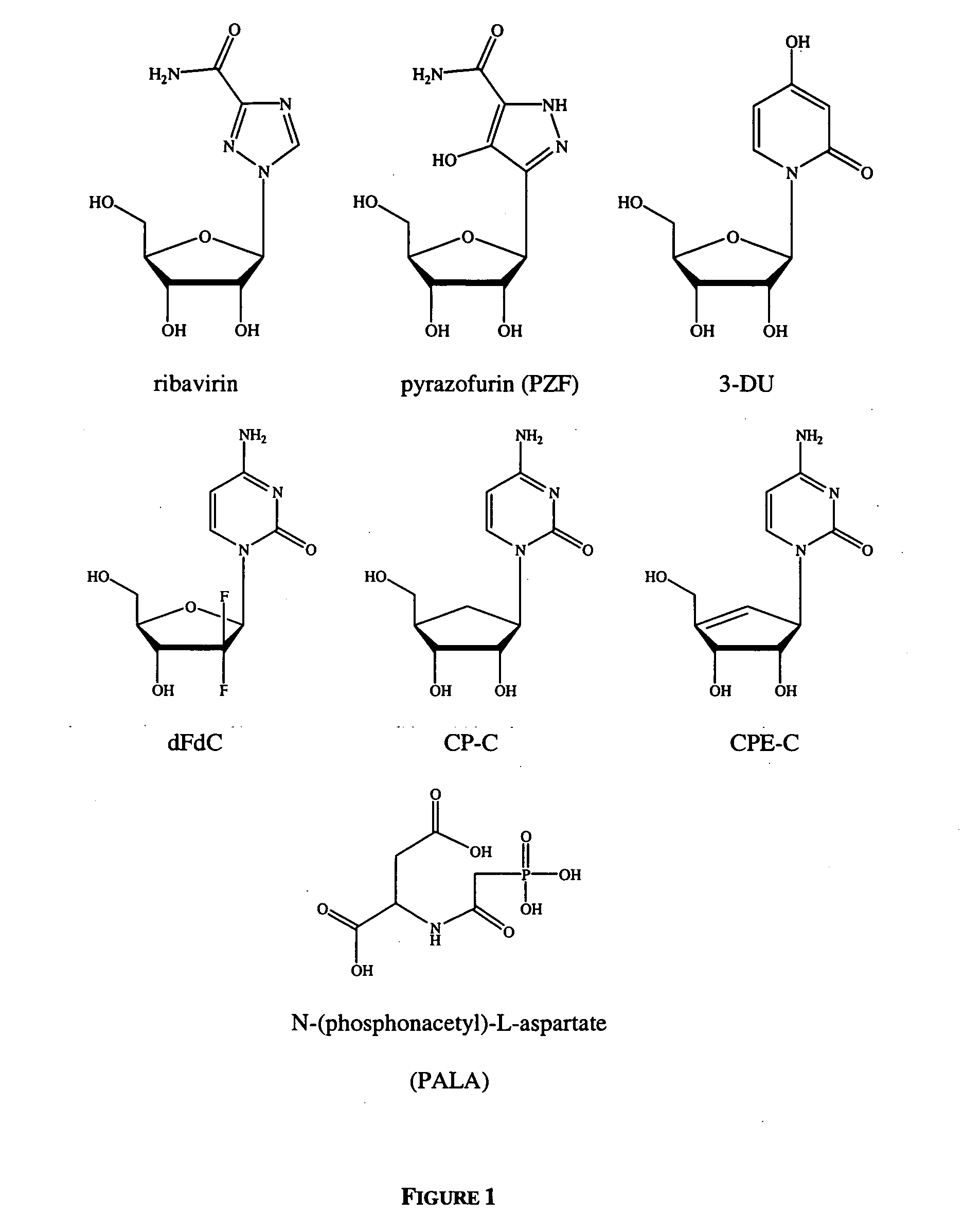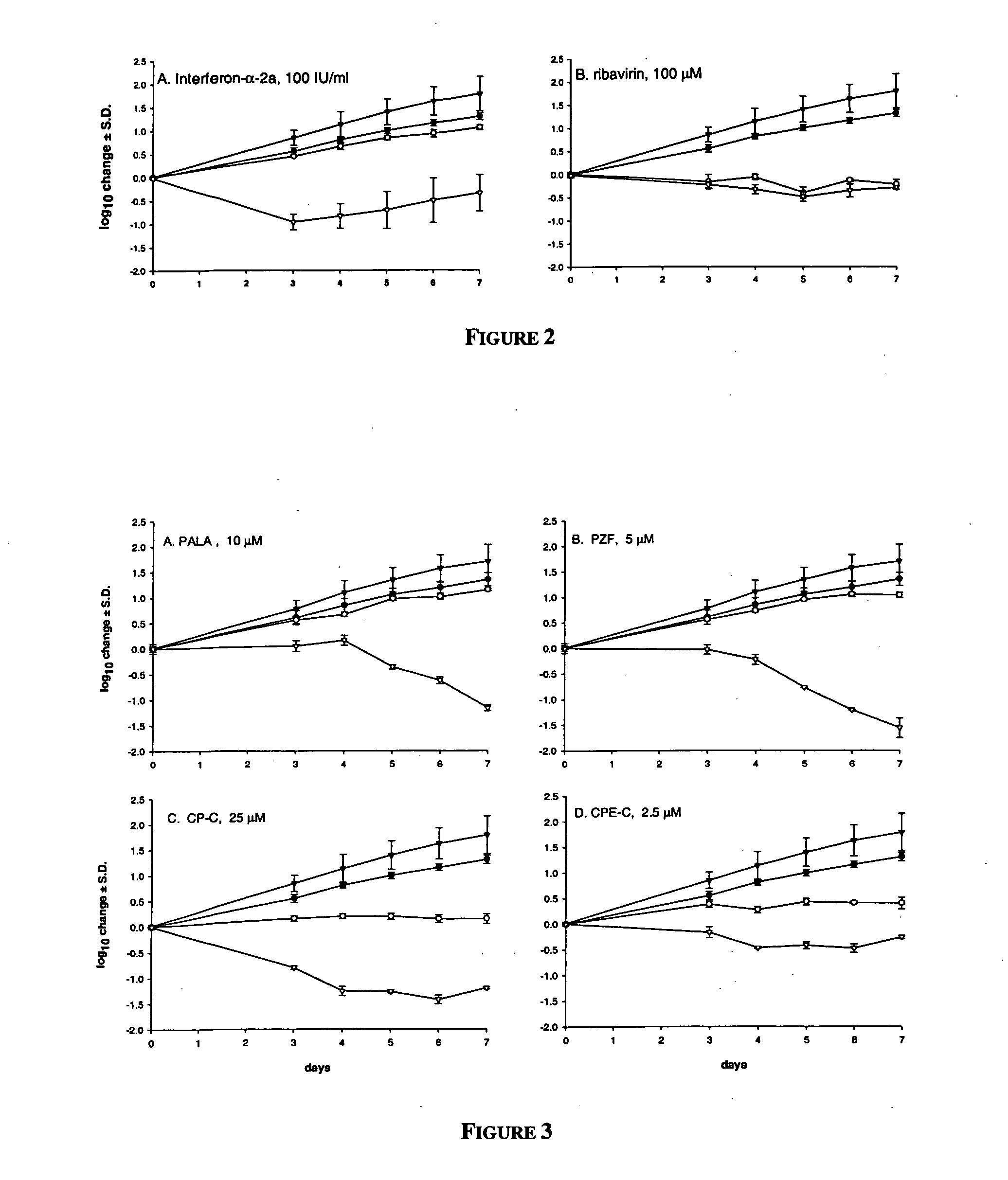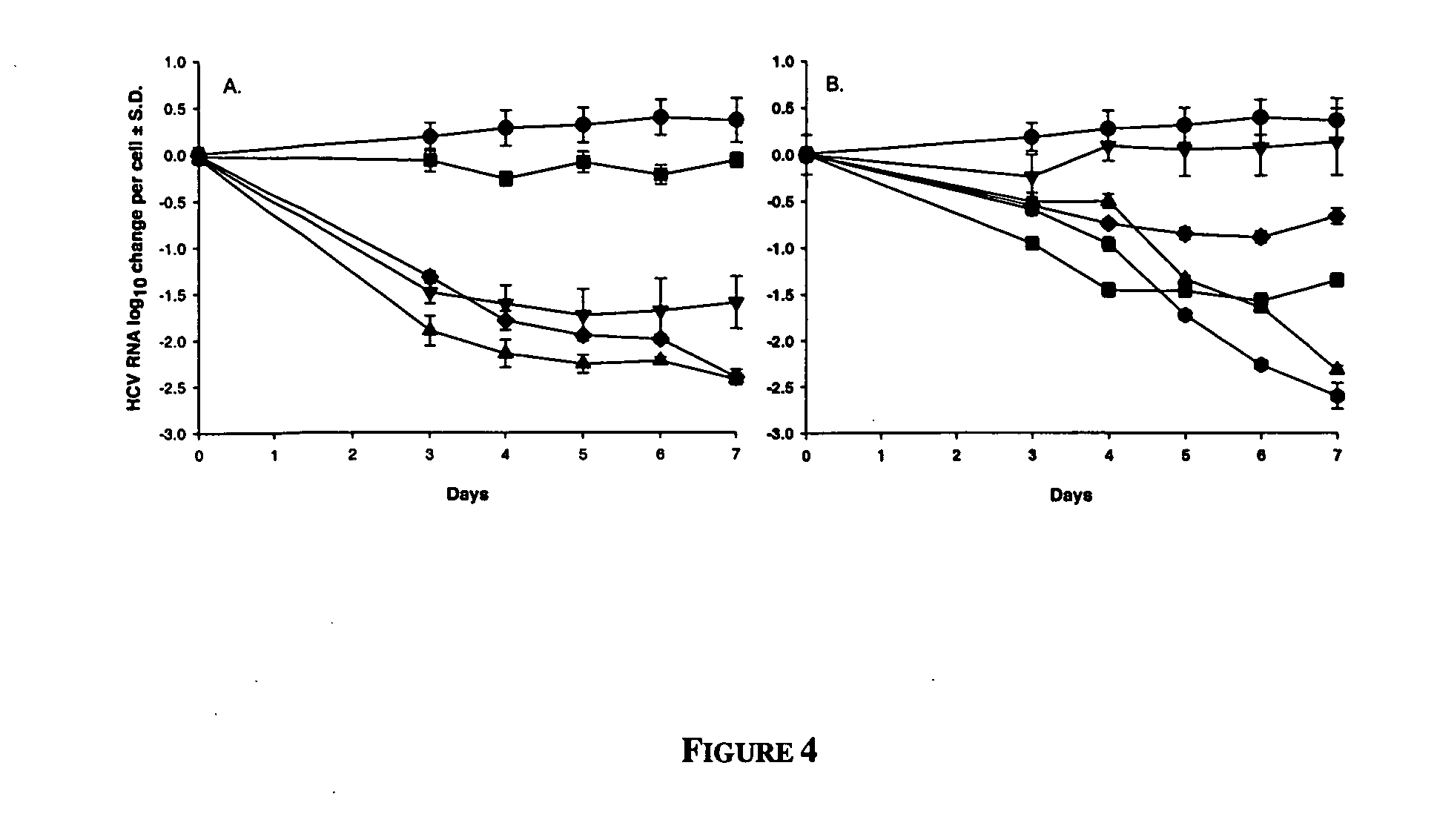Dosing regimen for Flaviviridae therapy
a technology of flaviviridae and dosing regimen, which is applied in the direction of biocide, phosphorous compound active ingredients, peptide/protein ingredients, etc., can solve the problems of inability of the immune system to recognize and combination therapy in patients with genotype 1 not very successful, and achieve the effect of rapid deactivation
- Summary
- Abstract
- Description
- Claims
- Application Information
AI Technical Summary
Benefits of technology
Problems solved by technology
Method used
Image
Examples
example 1
Despite the availability of infectious cDNA clones of the hepatitis C virus (HCV), efficient in vitro replication has not been observed (Bartenschlager, R. and V. Lohmann “Replication of hepatitis C virus”J Gen Virol. 2000, 81, 1631-1648). After transfection of subgenomic HCV RNA replicons that also express the neomycin phosphotranferase gene selection marker, HCV replication has been reported in the human hepatoma cell line Huh-7 (Bartenschlager, R. and V. Lohmann “Novel cell culture systems for the hepatitis C virus”Antiviral Res. 2001, 52, 1-17; Lohmann, V., F. Korner, J. Koch, U. Herian, L. Theilmann, and R. Bartenschlager “Replication of subgenomic hepatitis C virus RNAs in a hepatoma cell line”Science 1999, 285, 110-113). Such HCV replicon-harboring cell lines can be cultivated for more than a year without signs of cytopathogenicity (Pietschmann, T., V. Lohmann, G. Rutter, K. Kurpanek, and R. Bartenschlager “Characterization of cell lines carrying self-rep...
example 2
Specificity of the Antiviral Effect in the HCV Replicon System
Currently, IFN-α and ribavirin (FIG. 1) are the only drugs approved for treatment of HCV infection. Apart from these two agents, several other compounds have been reported to exert specific antiviral activity against HCV (see for example WO 02 / 057425 A2 to Merck &Co, Inc. and Isis Pharmaceuticals Inc.; Carroll, S. S. et al. “Inhibition of hepatitis C virus RNA replication by 2′-modified nucleoside analogs”J Biol Chem. 2003, 278, 11979-11984; WO 01 / 190121 to Idenix Pharmaceuticals; Walker, M. P. and Z. Hong “HCV RNA-dependent RNA polymerase as a target for antiviral development”Curr Opin Pharmacol. 2002, 2, 534-540).
In order to demonstrate the ability of the system to respond to specific inhibition, a series of control experiments were performed. IFN-α-2a and ribavirin were tested over a range of concentrations for their ability to reduce the HCV RNA levels in exponentially growing replicon cells after 4 days of exposu...
example 3
Antiviral Effect of Anti-Metabolites
One of the most important questions in testing anti-metabolites for anti-replicon (or antiviral) activity is whether induction of the cytostatic and / or cytotoxic condition can be separated from specific antiviral activity, since “dead cells don't make virus”. There are many reports in which specific antiviral activity has been ascribed to anti-metabolites, but to date, no systematic study has been conducted to determine their effects on HCV subgenomic replicon.
The results of our experiments are summarized in Table 1.
TABLE 1Antiviral and cytotoxicity effects of anti-metabolites on HCV replicontransfected Huh-7 cells.log10 RNACorrected HCV RNAreduction1 atlog10log10Corrected100 μMreduction1reductionHCV RNACompoundHCVrRNAat 100 μMat 10 μMEC90 (μM)Inosine monophosphate dehydrogenaseinhibitors (IMPDH; E.C. 1.1.1.205)Mizoribine0.29 ± 0.740.21 ± 0.500.08 ± 0.82−0.14 ± 0.12 >100Tiazofurin0.86 ± 0.270.99 ± 0.35−0.13 ± 0.37 0.04 ± 0.10>100Mycophenol...
PUM
| Property | Measurement | Unit |
|---|---|---|
| surface area | aaaaa | aaaaa |
| weight loss | aaaaa | aaaaa |
| structure activity | aaaaa | aaaaa |
Abstract
Description
Claims
Application Information
 Login to View More
Login to View More - R&D
- Intellectual Property
- Life Sciences
- Materials
- Tech Scout
- Unparalleled Data Quality
- Higher Quality Content
- 60% Fewer Hallucinations
Browse by: Latest US Patents, China's latest patents, Technical Efficacy Thesaurus, Application Domain, Technology Topic, Popular Technical Reports.
© 2025 PatSnap. All rights reserved.Legal|Privacy policy|Modern Slavery Act Transparency Statement|Sitemap|About US| Contact US: help@patsnap.com



